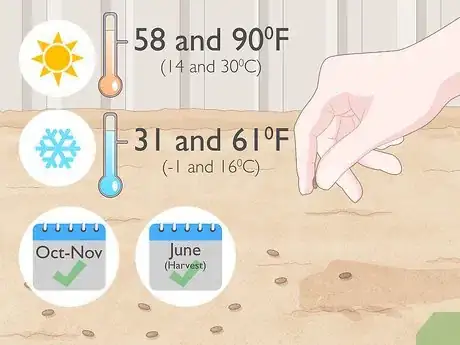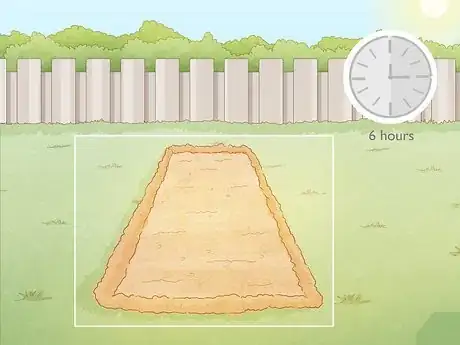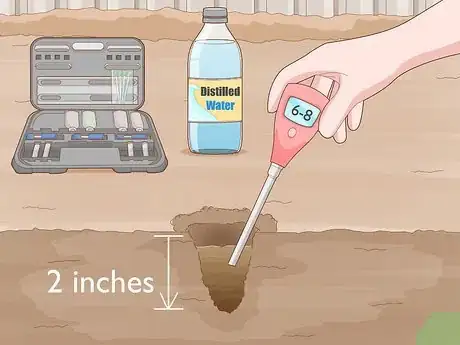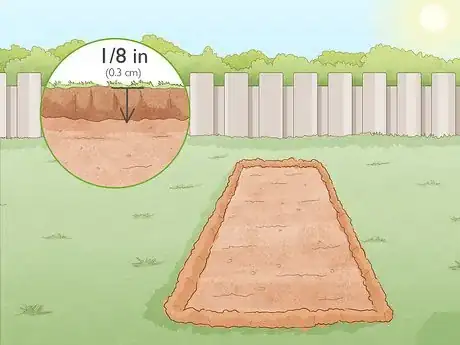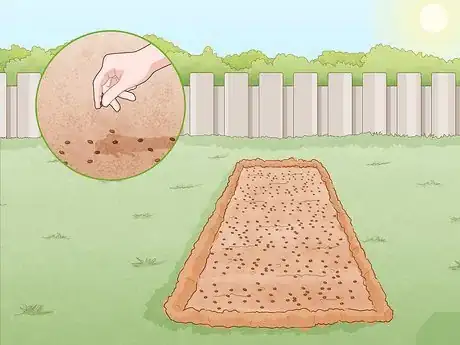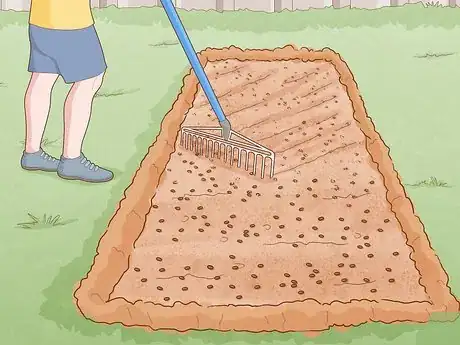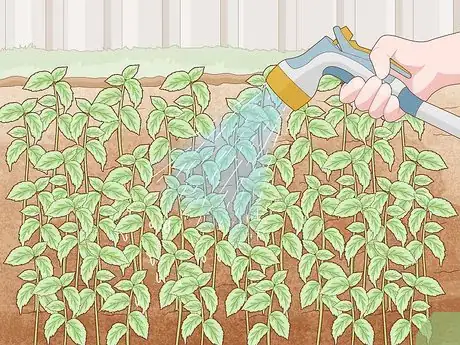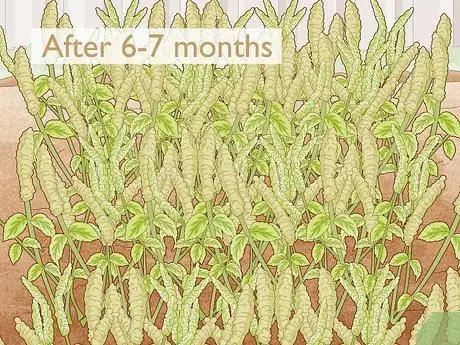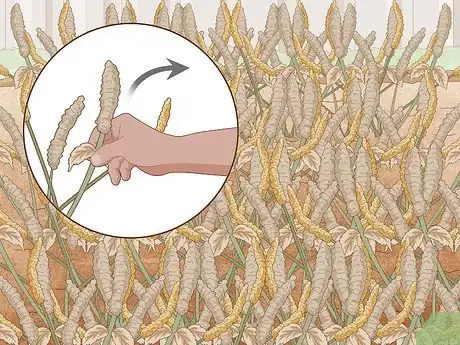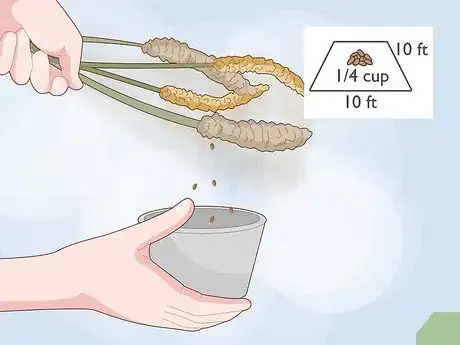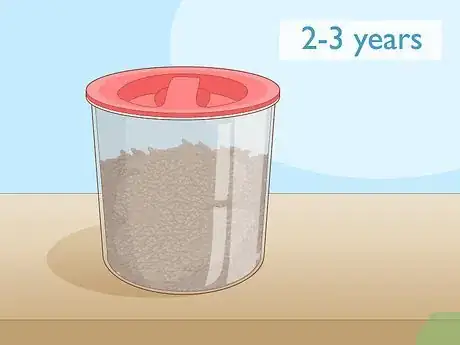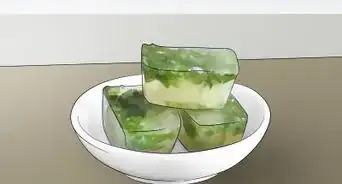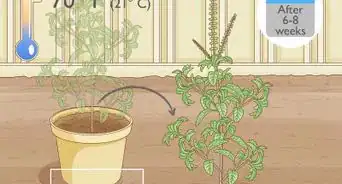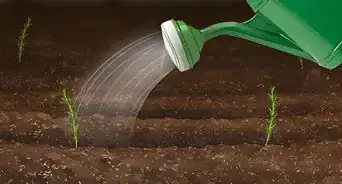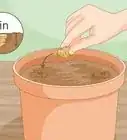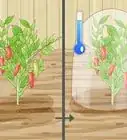This article was co-authored by wikiHow staff writer, Janice Tieperman. Janice is a professional and creative writer who has worked at wikiHow since 2019. With both a B.A. and M.A. in English from East Stroudsburg University, she has a passion for writing a wide variety of content for anyone and everyone. In her free time, you can find her working on a new crochet pattern, listening to true crime podcasts, or tackling a new creative writing project.
There are 9 references cited in this article, which can be found at the bottom of the page.
This article has been viewed 26,937 times.
Learn more...
Chia seeds are a nutritious plant that are rich in omega-3 fatty acids and antioxidants. Although chia seeds can be pricey at many grocery stores, it’s easy and inexpensive to plant, grow, and harvest your own chia right at home. Once you’ve found a dry, warm area to grow your chia seeds, use a rake to mix a handful of chia seeds into the soil. After watering your chia plant on a monthly basis, wait until the it has fully bloomed to harvest the seeds from the flowering chia plant. With the proper storage, you can enjoy your chia seeds for several years!
Steps
Propagating the Seeds
-
1Plant your chia seeds in a warm, temperate area. Research the average temperatures for your home, or wherever you plan on growing the chia. Before you assemble any gardening supplies, check that your planting area gets a lot of direct sunlight, and that the air temperature is around 60 °F (16 °C).[1] If a frost forms on your chia crops, they won’t be able to grow properly.[2]
- During the colder months, chia plants can survive between 31 and 61 °F (−1 and 16 °C). In the hotter months, chia plants can survive between 58 to 90 °F (14 to 32 °C).
- If you live in a warm climate, you can plant the seeds in October or November and harvest them in June.[3]
-
2Check that your chia seeds will get at least 6 hours of sunlight. Pick an area that gets a lot of sunlight, like a backyard. Since chia plants are hardy, you don’t need to worry about the seeds drying out. For a prosperous crop, choose a planting area that gets either partial or full sunlight.[4]
- Chia plants grow naturally in warm, sunny areas, like California and Southwest America.
Advertisement -
3Check your soil’s pH to see if it’s between 6.0 and 8.0. Dig a narrow hole in the soil that’s at least 2 in (5.1 cm) deep. Next, fill the soil opening completely with distilled water. To get an accurate reading, stick the probe from a soil pH test kit into the water. After leaving the probe in the soil for about 60 seconds, you can remove it to check for an exact reading.[5]
- If your soil is too acidic or basic, the chia seeds won’t be able to grow properly.
- You can adjust the pH of your soil if it’s too high or low.
- Chia seeds thrive in soil with good drainage.
-
4Dig ⅛ in (0.3 cm) into a section of soil to displace the dirt. Using a gardening shovel or trowel, scoop away a thin layer of soil from the surface of your gardening area. Arrange the soil around the edge of your gardening area so you have easy access to it.[6]
- Unlike other plants, chia seeds don’t need a lot of soil to take root.
-
5Scatter the chia seeds in a thin layer over the soil. Don’t worry about using an exact measurement—instead, focus on sprinkling the seeds over the entire section of displaced soil. If you’re planting your chia in a small area, like a planter or tray, use a spoon to scatter the seeds.[7]
Tip: You can purchase chia seeds at many plant nurseries.[8]
-
6Rake the seeds into the top layer of soil. Take a gardening rake and go over the seeds in long, vertical movements. As you work, try to cover the chia seeds with the thin layer of displaced soil. Don’t worry about burying the seeds; instead, do your best to mix them in with the surrounding soil.[9]
- If you’re planting your seeds in a planter, you don’t need to use a rake.
Maintaining and Harvesting the Crops
-
1Spray over the crops with a garden hose once a month. Monitor the weather as your seeds begin to grow. While chia plants thrive in dry weather, you still need to water the seeds on a regular basis. Once a month, use a gardening hose or watering can to nourish your seeds, so your plants can grow at a steady pace.[10]
- Since chia plants are hardy, you don’t need to water them right away.
- Try not to water your chia seeds immediately after a rainstorm.
- Don’t water your seeds more than twice per month.[11]
Did you know? Chia plants are hardy plants that are unaffected by garden pests and disease.[12]
-
2Wait 6-7 months for the chia to blossom and reach its full height. As you continue watering your plants over several months, monitor how much the chia plants grow. After at least 6 months have passed, wait for the plant to be at least 3 feet (0.91 m) tall. At this point, check that the leaves are about 1.5 to 3 in (3.8 to 7.6 cm) and 1 to 2 in (2.5 to 5.1 cm) wide.[13]
- Chia seeds are only 2 mm long. You can find them in the blue, purple, or white flowers sprouting from the plant.
- If you harvest the chia seeds too early, the seeds might not be as high quality.
-
3Collect the chia seeds when the flower is dried and brown. Monitor the chia plants after they’re 6-7 months old. Once it looks dried out, lightly shake the flowering tip of the plant. At this point, listen for the rattling sound of the chia seeds inside of the flower.[14]
-
4Shake the chia flower vigorously over a bowl or bucket. Using 1 hand, hold a small bowl or bucket beneath the flowering tip of the chia plant. With your opposite hand, shake the flower quickly, or until you see chia seeds falling from the plant. Repeat this process with all of the crops in your garden.[15]
- Don’t be alarmed if you don’t get a lot of chia seeds from your harvest. Generally, a 10 by 10 feet (3.0 by 3.0 m) section of chia plants will only generate ¼ cup (40 g) of seeds.
- Some chia seeds will fall back into the soil.
- Healthy, matured chia seeds are speckled with cream and gray, while immature seeds look brown.[16]
-
5Store your chia seeds in an airtight container for 2-3 years. Pour your seeds into a plastic, airtight container. Use a label or piece of masking tape to note when you harvested the seeds, so you can keep track of how old they are. Leave the container in a dry, cool area so the chia seeds can stay as fresh as possible![17]
- Don’t store your chia seeds in the refrigerator.
Things You’ll Need
- Soil
- pH testing kit
- Distilled water
- Shovel
- Gardening gloves
- Rake
- Hose or watering can
- Bucket or bowl
- Airtight container
References
- ↑ https://calscape.org/Salvia-columbariae-(Chia)?srchcr=sc584d45ade1b97
- ↑ https://www.uky.edu/ccd/sites/www.uky.edu.ccd/files/chia.pdf
- ↑ https://www.kcet.org/shows/tending-the-wild/plant-medicine-grow-your-own-chia
- ↑ http://www.amwua.org/plant/chia
- ↑ https://calscape.org/Salvia-columbariae-(Chia)?srchcr=sc584d45ade1b97
- ↑ https://www.kcet.org/shows/tending-the-wild/plant-medicine-grow-your-own-chia
- ↑ https://m.youtube.com/watch?v=VXDcetvKh8c&t=2m3s
- ↑ https://calscape.org/Salvia-columbariae-(Chia)?srchcr=sc584d45ade1b97
- ↑ https://www.kcet.org/shows/tending-the-wild/plant-medicine-grow-your-own-chia
- ↑ https://www.kcet.org/shows/tending-the-wild/plant-medicine-grow-your-own-chia
- ↑ https://calscape.org/Salvia-columbariae-(Chia)?srchcr=sc584d45ade1b97
- ↑ https://www.britannica.com/plant/chia
- ↑ https://www.uky.edu/ccd/production/crop-resources/GFFOF/chia
- ↑ https://m.youtube.com/watch?v=6jd0hoikhp8&t=0m4s
- ↑ https://www.kcet.org/shows/tending-the-wild/plant-medicine-grow-your-own-chia
- ↑ https://www.uky.edu/ccd/sites/www.uky.edu.ccd/files/chia.pdf
- ↑ https://www.bonappetit.com/test-kitchen/ingredients/article/chia-seeds
- ↑ https://www.kcet.org/shows/tending-the-wild/plant-medicine-grow-your-own-chia
